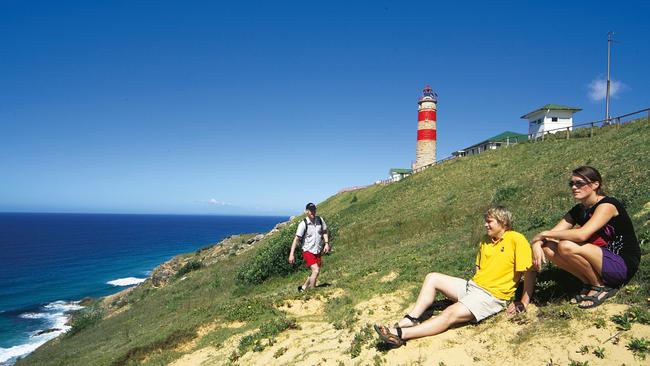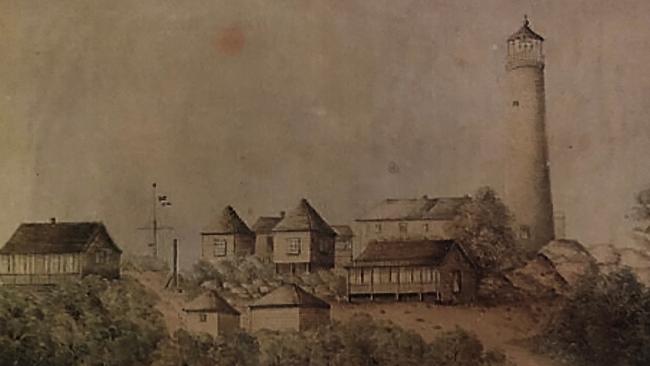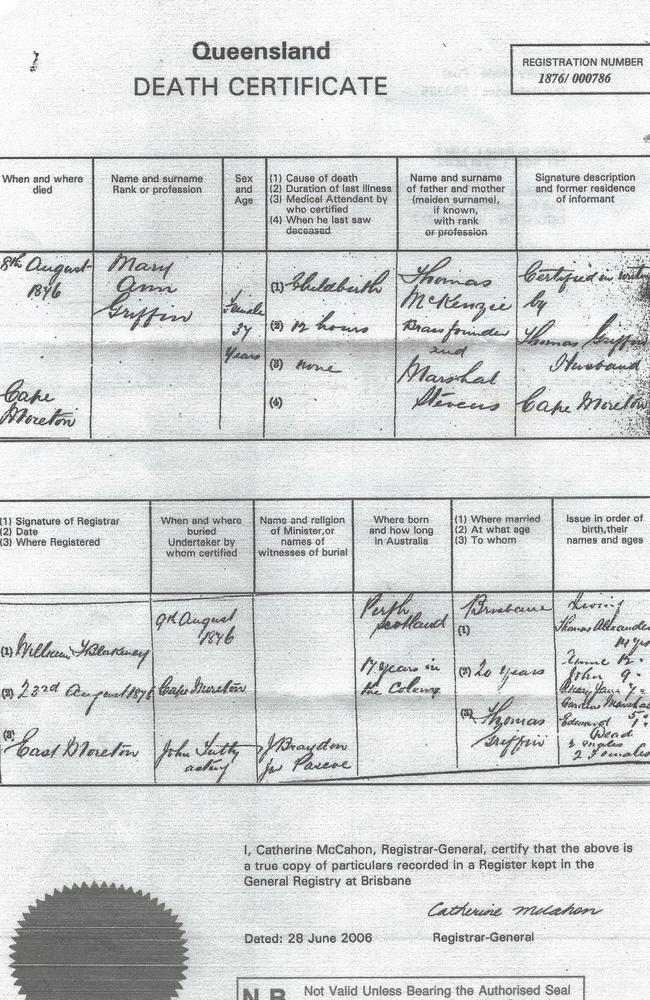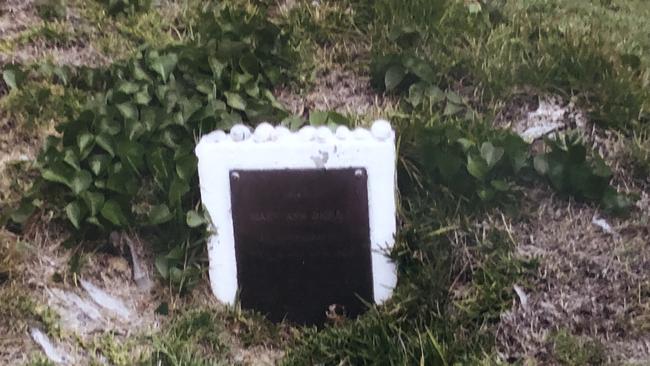Way We Were: Unimaginable tragedy of Cape Moreton’s lighthouse
It’s one of southeast Queensland’s most serene spots. But locals say a ghostly figure is often seen here - a reminder of the heartbreaking tragedies one family had to endure.

QLD News
Don't miss out on the headlines from QLD News. Followed categories will be added to My News.
A lonely grave lies in the sand in the shadow of Cape Moreton lighthouse, the final chapter of the remarkable story of Mary Griffin, the lightkeeper’s wife, who didn’t rest in peace – in life or in death.
Mary Ann McKenzie was born during a freezing Scottish winter in late 1839. All she got from her father was his name, and it wasn’t long before she and her mother were in a poor house in Perthshire.

Despite early deprivations, eight-year-old Mary went to school where she learnt about a new country that held the promise of a better life.
At 19, she took a leap of faith and set off for Moreton Bay on the other side of the earth, knowing she would never see her home or her mother again.
Within three months of arrival, Mary fell in love and married Irish immigrant Thomas Griffin, a hardworking man who had little trouble finding a job. Mary soon fell pregnant and it seemed her dreams were within reach.
Two months after their marriage, the colony of Queensland was created and Thomas became an employee of the new government as a boatman at the Bulwer pilot station on Moreton Island.

The only problem was that he had to live in the Island’s single quarters, away from his family. Their daughter Catherine was born in 1860, and within a year Mary was again pregnant.
Tragedy struck when 18-month-old Catherine died a month before Thomas was born in 1862. The likely cause was typhoid which also claimed baby Thomas at 14 months.
Another three children were born – Annie, William, and John – but William died at 10 months.
The Griffin family moved to Bulwer when cottages became available for married men and Mary Jane was born in 1869. It had been a difficult birth so when Mary again became pregnant it was agreed she should travel to Brisbane for the birth of her seventh child, Caroline.
After the accidental death of one of the lightkeepers at the Cape Moreton Lighthouse, Thomas was offered the position and readily accepted, although Mary was nervous about
moving to the remote far side of the island.
Florence was born at Cape Moreton in 1872 but died after only six days and a year later, Robert survived for only 24 days. Both babies were buried below the lighthouse.
A 10th child, Edward, born in late 1874, became Mary’s pride and joy.
By the time her 11th pregnancy was nearing term, Mary was advised to travel to Brisbane to have the baby under medical supervision but knowing it was an arduous journey she elected to stay on the island.
It was a fateful decision. Mary went into labour early and after 12 hours, died in childbirth on August 7, 1876. She was only 36.
Mary was buried the next day in a sandy grave near her two babies in the shadow of the lighthouse.

Broken hearted, Thomas battled on with his six surviving children, but fate hadn’t finished with the Griffins.
In February 1883, eight-year-old Edward was killed in an accident. Mary’s grave was reopened and she was reunited with her son.
It was the last straw for Thomas who left the island, never to return.
The unmarked graves were left unattended and eventually forgotten. But there would be little resting in peace.
A violent storm in 1965, exposed human remains near the lighthouse and the resident lightkeeper, assuming them to be Aboriginal, took them to the Queensland Museum.
Elders advised the Cape was not a traditional burial site and for the next 32 years the bones languished in storage in Brisbane.
In 1994, Mary’s descendant, the late Phil Shanahan, was given permission to place a memorial plaque on the original gravesite.
To his surprise, three years later, the Australian Maritime Safety Authority advised him that the remains at the museum had been positively identified as those of a European woman and a child. The bones of the two babies would have been too fragile to have remained intact.
Once again Phil made the pilgrimage to Cape Moreton, this time with the remains of Mary and Edward who were finally laid to rest.
Mary’s great grandson, David Goulding of Brisbane, although a sceptic, believes she still wanders the lighthouse site.
Witnesses claim to have seen the ghostly figure of a woman where the Griffins’ small stone cottage once stood.
The building fell into disrepair decades ago, and a new cottage in its exact place is now rented to fishermen and tourists.
“I am certain that over coming decades, or even centuries, that whoever stays in the second assistant’s cottage will have Mary Ann Griffin for company,” David says.




